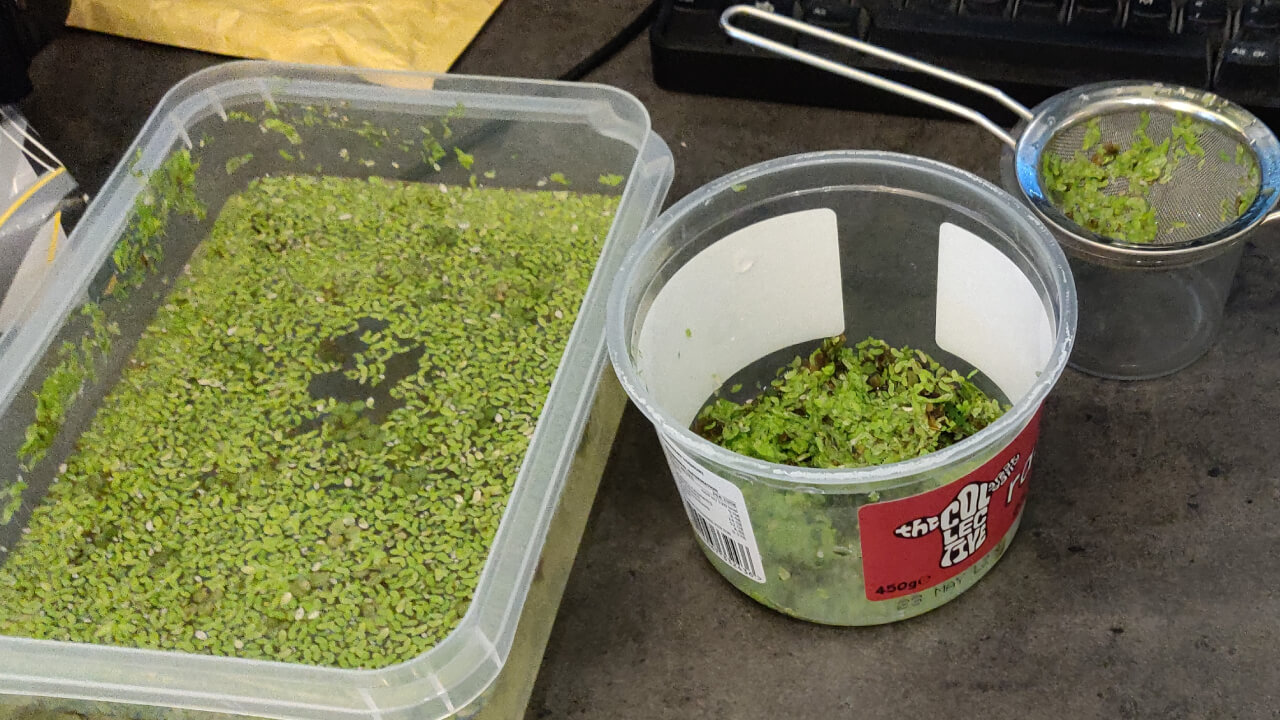Duckweed has a bit of a reputation.
Once you have duckweed, you’ll always have duckweed.
Or that’s the popular sentiment at least.
Seriously though, it’s a very powerful plant that will make full use of any nutrients in your tank, and grows incredibly fast.
There’s no reason to get rid of it if you like it.
How I got duckweed
In my early days of shrimp tanks, I bought a bag of water spangle floating plants to get started. Amongst the spangles were some tiny leaves, which I naively thought were just “baby spangles”.
They were not. They didn’t grow to their “adult size” because they were actually duckweed leaves.
Over time, their population grew and got to a point where I couldn’t put anything in the tank without covering it in a layer of duckweed.
I wanted to get rid of the duckweed, and just keep the larger floating plants instead.
Removing duckweed
My method was a bit more time consuming, as I wanted to keep some of the other floating plants.
I’d still recommend the same approach if you only have duckweed.
Equipment used
- A jug
- A temporary water bowl to hold clean plants
- A sieve or net
I prepared a jug with a small amount of the tank water.
Similar to watercolor painting, I used the jug to dip batches of floating plants, and then once clean, put them into the holding bowl.
Method
- Disturb the floating plants
- Scoop out some plants
- Dip into the cleaning jug
- Move the to-keep plants into a holding bowl
- Dispose of the duckweed
As I needed to sift through the floating plants, this process took me about an hour for my 10 gallon tank.
Disturb the surface
Gently pushing the floating plants on the surface should hopefully shoo away most of the shrimp hanging on underneath.
This reduces the chance of accidentally catching a shrimp as you scoop the plants out.
The roots of floating plants catch a lot of detritus, algae, and biofilm. They’re the shrimp equivalent of a snack bar.
Scoop and dip
Use a net, sieve, or even your hands to move the plants into the cleaning jug.
The water should help loosen duckweed leaves stuck to the plants you want to keep.
You might also notice a stray shrimp run out of the scoop when you dip it into the jug.
I thought I was being super cautious and wouldn’t get any shrimp by mistake, but I still managed to scoop up a couple.
If you do accidentally move some shrimp, just clear the duckweed from the jug’s surface and net the shrimp back home.
Dispose of duckweed
Make sure you get rid of the unwanted duckweed responsibly.
Preferably, leave the duckweed somewhere to dry out for a few days and kill it off.
It’s very invasive and will have a huge impact on ecosystems if you just throw it outside, or in a nearby pond.
Tips
- Feed the tank 20 minutes before you start
- Check back every couple of days
- Dose fertilizers carefully
Distract with food
Adding a tasty treat into the tank, preferably on the floor, should entice most of the shrimp away from the floating plants.
This’ll make it less stressful for them, and reduce the risk of trapping any shrimp in the cleaning jug.
Check for sneaky stowaways
My shrimp would quite often pull bits of duckweed under the water and get them trapped under bits of driftwood or other plant leaves.
This meant that when I checked back on my tank later, I found duckweed again.
I had to keep a close eye on the surface for a few days to give time for any loose leaves to make it back to the surface again.
It’s definitely possible to remove all the duckweed and prevent it coming back, you just need to be consistent from the beginning.
Fertilize with care
Floating plants, like duckweed, have access to carbon dioxide from the air. This lets them grow so much quicker than underwater plants, which need to wait for the CO2 to be dissolved first.
Combined with dosing fertilizer into the water, it’s a recipe for explosive growth.
If you dose your tank with nutrients but want to get rid of duckweed, consider cutting back a bit on your dosing too.
The dosage you continue to add will linger in the water for longer too, once you’ve removed the hungry unwanted plants.

